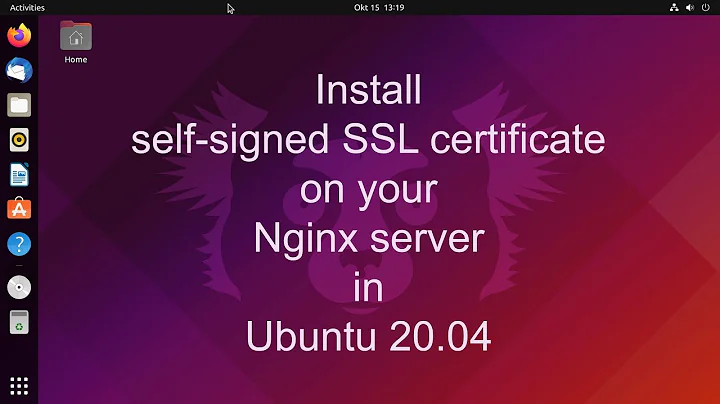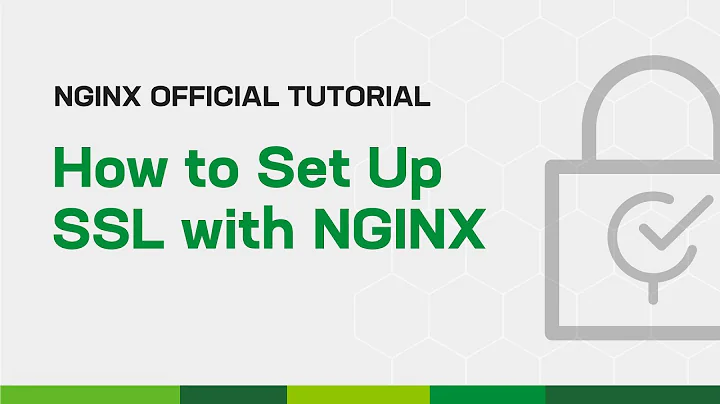NGINX + SSL certificate securing the connection in some browsers only
I suspect that your colleague misunderstood the ssl related directives: the file pointed to by ssl_certificate should contain your server's certificate followed by intermediate certificates, and ssl_client_certificate is only needed for client cert verification and OCSP - I think he copied the intermediate(s) into that file. Now, a browser that already has the proper intermediate certificates in cache will allow the page whereas browsers that don't have them yet will fail as they cannot construct the chain of trust.
Try putting the ssl_client_certificate line in comment and copy the intermediate cert into the ssl_certificate_ing.crt file if it's not there yet, and do so after your server's certificate.
So, ssl_certificate_ing.crt should look like this:
----- BEGIN CERTIFICATE -----
.. your server's certificate
----- END CERTIFICATE -----
----- BEGIN CERTIFICATE -----
.. first intermediate certificate
----- END CERTIFICATE -----
Also, see the documentation.
Nice tool to check a certificate's content online: https://www.sslshopper.com/certificate-decoder.html
Related videos on Youtube
lgg
Updated on September 18, 2022Comments
-
lgg over 1 year
I've been strugling with this issue and I seem to be running into a dead end here without knowing what to do next...
I've taken a task left by another worker who left on vacation. He was trying to setup SSL certificates for two diferent websites www.laenergiadelcambio.com and www.theenergyofchange.com. These are thawte certificates for a single domain. Note: we are making these changes in a test enviroment, so the changes to the NGINX URL's vHosts files are not public yet.
The HTTPS conection is made by a NGINX server which after securing the connection, makes a proxy_pass to an Apache machine which serves the website content.
First, he ran into the problem of always receiving the same certificate (laenergiadelcambio.com) for both websites. And after some reading we found that it was because of our OS (Centos 5.5) lacking TLS SNI support (Server Name Indication) due to an old version of openssl (0.9.8e). We decided to assign a unique IP for listening in each server block as told in the NGINX Documentation.
And here's the things. It works, BUT not in all browsers and versions.
For the following tested browsers:
Opera 31.0.1889.174 Firefox 40.0 Firefox 38.0 Google Chrome 44.0.2403.157 Internet Explorer 11.0.9600.17691 Internet Explorer 9.0.8112.16421Each one recognizes the certificate and stablishes a secure connection. All fine and no problems.
But for the following ones,
Firefox 39.0.3 Firefox 40.0.3 lynx 2.8.5I got certificate not trusted errors.
Firefox complains about this: (Error code: sec_error_unknown_issuer)
And I attach the details for the certificate..
lynx throws me this...
lynx www.theenergyofchange.com/wp-admin Making HTTPS connection to www.theenergyofchange.com Retrying connection without TLS. Looking up www.theenergyofchange.com Making HTTPS connection to www.theenergyofchange.com Secure 256-bit TLSv1/SSLv3 (DHE-RSA-AES256-SHA) HTTP connection Sending HTTP request. HTTP request sent; waiting for response. SSL error:unable to get local issuer certificate-Continue? (y) SSL error:host(www.theenergyofchange.com)!=cert(theenergyofchange.com)- Continue? (y) Alert!: Unexpected network read error; connection aborted. Can't Access `https://www.theenergyofchange.com/wp-admin' Alert!: Unable to access document.Next, I post two nginx vHosts configuration only for one site www.theenergyofchange.com , the HTTP and HTTPS. The other site is identical except for the server_names
072-blogs_391_ing.conf
server { server_name theenergyofchange.com theenergyofchange.es theenergyofchange.info theenergyofchange.eu www.theenergyofchange.es www.theene rgyofchange.info www.theenergyofchange.eu; rewrite ^ $scheme://www.theenergyofchange.com$request_uri permanent; } server { listen 80; server_name theenergyofchange.com theenergyofchange.es www.theenergyofchange.com pre.theenergyofchange.abg.corp www.theenergyofchange. es www.theenergyofchange.com www.theenergyofchange.info www.theenergyofchange.eu; access_log /var/log/nginx/blog_391ing.access.log; error_log /var/log/nginx/blog_391ing.error.log error; error_page 404 403 /handle404.html; # error_page 502 503 504 /handle503.html; error_page 500 502 503 504 /handle500.html; location = /handle404.html { root html/errores-prxy; } location = /handle503.html { root html/errores-prxy; } location = /handle500.html { root html/errores-prxy; } location = / { proxy_pass http://wordpressprepro391.simosa.inet/; } location / { proxy_pass http://wordpressprepro391.simosa.inet/; } location ~* /colab/web/system/modules/general/pages/captcha.jsp { proxy_pass http://wordpressprepro391.simosa.inet; } location ~* /colab/web/system/modules/general/resources/js/ { proxy_pass http://wordpressprepro391.simosa.inet; } location ~* /colab/ { proxy_pass http://wordpressprepro391.simosa.inet; } # Redirect wp-admin and wp-login requests to HTTPS. location ~ /wp-(?:admin|login|content|includes) { return 301 https://$host$request_uri; } }073-blogs_ing_392-ssl.conf
server { listen 80; rewrite ^(.*) https://$host$1 permanent; } server { listen 192.168.14.141:443 ssl; server_name www.theenergyofchange.com; access_log /var/log/nginx/blog_392-ING-PRUEBA-SSL.access.log; error_log /var/log/nginx/blog_392-ING-PRUEBA-SSL.error.log error; error_page 404 403 /handle404.html; # error_page 502 503 504 /handle503.html; error_page 500 502 503 504 /handle500.html; ssl on; ssl_certificate /etc/nginx/openssl/CA/certs/ssl_certificate_ing.crt; ssl_certificate_key /etc/nginx/openssl/CA/private/theenergyofchange.com.key; ssl_client_certificate /etc/nginx/openssl/CA/certs/Intermediate_CA.crt; location = /handle404.html { root html/errores-prxy; } location = /handle503.html { root html/errores-prxy; } location = /handle500.html { root html/errores-prxy; } location = / { proxy_pass http://wordpressprepro391.simosa.inet/; } location / { proxy_pass http://wordpressprepro391.simosa.inet/; } proxy_read_timeout 3500; proxy_connect_timeout 3250; proxy_set_header X-Real-IP $remote_addr; proxy_set_header Host $host; proxy_set_header X-Forwarded-For $proxy_add_x_forwarded_for; proxy_set_header X-Forwarded-Proto https; proxy_set_header SSL_PROTOCOL $ssl_protocol; proxy_set_header SSL_CLIENT_CERT $ssl_client_cert; proxy_set_header SSL_CLIENT_VERIFY $ssl_client_verify; proxy_set_header SSL_SERVER_S_DN $ssl_client_s_dn; }So.. what am I missing here that makes some browsers secure the connection and others not trust the certificate issuer?
Many.. MANY thanks in advance!!
-
lgg over 8 yearsThanks for the answer! I'll try that now! Is this what's called certificate chaining (for NGINX)? Since I don't have a mean to contact him, I'm not sure how exactly he treated the certificates. But in the .crt, there's only one BEGIN/END block. Well.. gonna try what you said now. Thanks!
-
fvu over 8 years@LuisGarnicaGuilarte As explained here? yes. As I said, and as mention in the manual page, order is important.
-
fvu over 8 years@LuisGarnicaGuilarte by just pasting a
----- BEGIN CERTIFICATE ----- .. ----- END CERTIFICATE -----blokc into the certificate decoder tool I mentioned you can investigate its contents (and see what Issuer it points to - if the issuer is not a root cert you need to add that intermediate as well. -
lgg over 8 yearsThanks a lot @fvu !!! As you said it worked!, I also read the documentation and it couldn't be more right :-) as I correctly secured the connection and the browser cached the intermediate certificate, I got no complains when I try to open www.laenergiadelcambio.com (vHost in which I haven't appended yet the intermediate certificate to the server certificate), so I'm gonna change this other vHost now. Again, thanks a LOT for your help!
-
fvu over 8 years@LuisGarnicaGuilarte you're welcome, good luck with your project!






